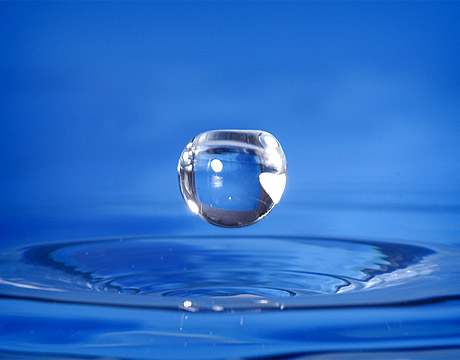Shocking Purity
Shocking Purity


As the fresh waters of our world become murkier, there’s an even greater need for better and cheaper ways to de-foul the befouled. Now there’s a new method for making salty, poisoned, or otherwise undrinkable water pure: shock it, and watch it turn clean.
In 2009 Martin Bazant, now a professor of chemical engineering and applied mathematics at MIT, was at Stanford, where researchers had just discovered that by applying a charge to microfluidic channels, water could be effectively depleted of salt. But the phenomenon occurred on unmoving water for a lab on a chip. “When I saw their work, I understood the basic physics at play, which had to do with surface transports and surface conduction and surface convection,” says Bazant. “That was where I got the inspiration for my work.”
And Bazant’s work has now resulted in a first prototype that transforms dirty water to pure.
Electrodialysis
In any kind of electrodialysis a current is applied to an electrolyte and positive ions go to one side and negatives to the other. “What limits traditional electrodialyses, and many other electro chemical processes, is when the concentration of salt goes to zero you’ve reached transport limitation,” says Bazant. His system overcomes that by adding a shockwave.
“When you reach strong depletion, the electric fields are getting big because the conductivity is going down, and you’re imposing a high current and that electric field pushes on the ions that are in the double layer. Basically, it is able to carry the ions to the surface faster than diffusion by two mechanisms,” he says. One is surface conduction, where the electrical field is literally dragging the ions to their place. The other is surface convection, which is driven by electroosmotic flow. The electric fields that are pulling the ions drag the fluid with along too, creating convection. “That brings salty fluid to the surface faster than diffusion,” he says.
Where other electrodialysis methods leave the water 90 percent pure, Bazant’s technology hits a purity level of 99.99 percent, with no detectable salt left in the water.
And it’s not just salt. The technique can remove practically anything from the flow of water. Thanks to the shock wave, “The flows will transport anything that’s in the solution,” says Bazant. “So you can have neutral species being affected by these sort of unusual transport phenomenon.”
Desalination
For the desalination of seawater, nothing is likely to beat reverse osmosis, despite the high-energy cost. But in cases where the salt concentration is lower, or there’s a specific impurity in the water that’s being targeted, shock electrodialysis would make a superior alternative. Think the Canary Islands. There, all drinking water comes from seawater run through reverse osmosis. Then, because of high concentrations of boron, the water is run through reverse osmosis a second time. “So they’re paying double to achieve this result,” says Bazant. “You could imagine that for them, after the first pass, you run our system.” Similarly, the situation in Flint, MI, could be another potential application. “I don’t think it would make sense to run reverse osmosis on all that water just to remove some lead ions," says Bazant. "We just have to remove the toxic ions, and do it with very high precision, and very thoroughly. So that’s very well suited for the type of process that we have.”
The system also has the advantage of being scalable, he says. It could work for a hiker in the woods or a municipality interested in water recycling. The Army has already inquired, hoping to use a small-scale version for the individual soldier or platoon.
“I’m getting a lot calls from people saying, ‘Can you sell me a device right now?’ I say, ‘Well, no, not really. I have this little thing that sits in the palm of your hand and it’s the first of its kind.’ But I don’t think we’re that far off. It’s really a question of resources and what the pathway will be to commercialization. It will happen, but when, and how quickly, remains to be seen.”
Michael Abrams is an independent writer.
I’m getting a lot calls from people saying ‘Can you sell me a device right now?’ I say, ‘Well, no, not really. I have this little thing that sits in the palm of your hand and it’s the first of its kind.’Prof. Martin Bazant, MIT





